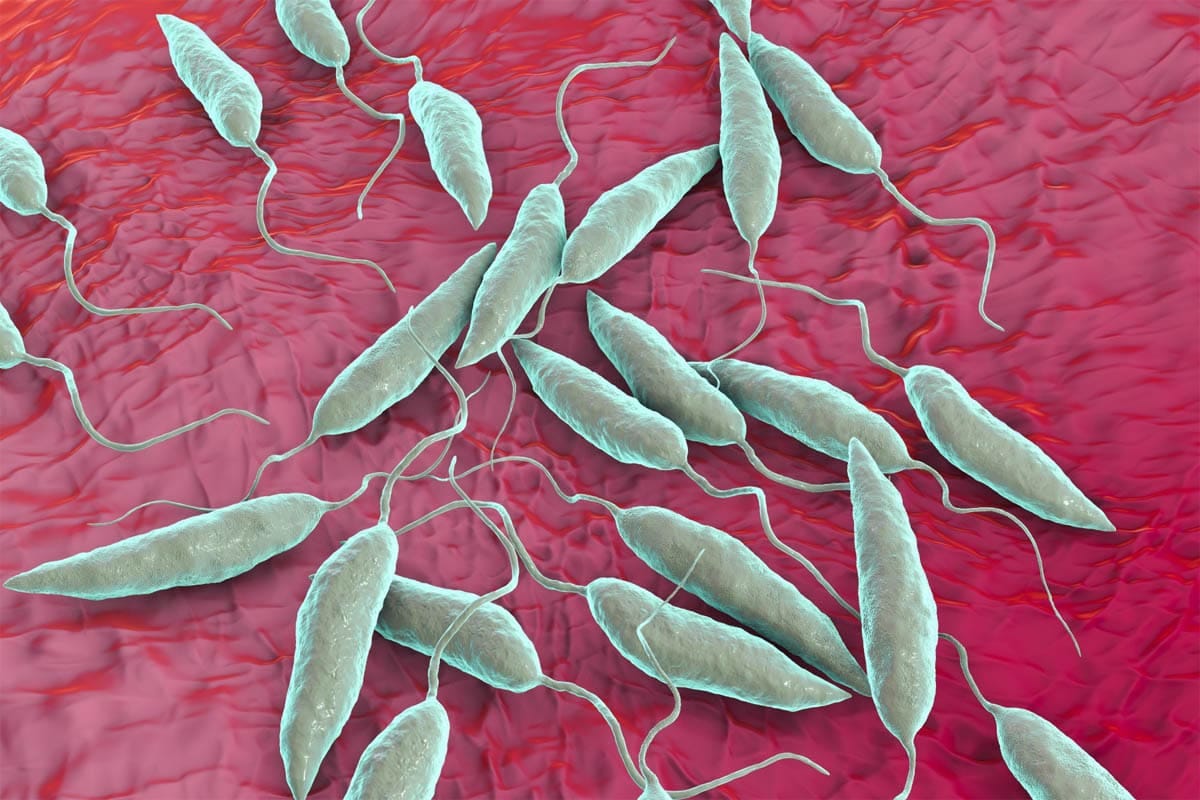An urgent headline in Scientific American last month boldly declared:
“A Nasty Tropical Skin Disease Is Now Endemic in the U.S”
My first thought reading that was…
DUH! Haven’t we known that for years???
Apparently not, because I’ve seen versions of the story breathlessly repeated not only in SA, but also NPR, CNN, and many other news outlets. It also seems to have caught physicians treating the disease by surprise:
The boy had tested positive for cutaneous leishmaniasis, a neglected tropical disease. The World Health Organization says between 600,000 and 1 million new infections happen worldwide every year, mostly in tropical regions of the Americas, the Mediterranean basin, the Middle East and Central Asia — not in Texas….
“I was shocked, because in medical school, we're taught that this is a tropical disease, something that you see in immigrants, military returning from deployment, people who went on vacation to South America or Asia or Africa," McIlwee says.” (NPR story)
That quote illustrates the prevailing view of Leishmania as something that happens over there, to other people. As myopic and condescending as that notion is, it is not even accurate! Researchers in Texas published a study in 2018 suggesting Leishmania was already endemic in the US, and the CDC supported that claim at the 2023 American Society of Tropical Medicine and Hygiene conference.
So let’s take a look at what Leishmania is, how it’s contracted, and how a One Health approach to disease could alert physicians to other multispecies infections earlier next time.
What IS Leishmania??

Leishmania is a genus of several closely-related protozoan parasites predominantly found in tropical and subtropical regions, including parts of Asia, Africa, South America, and the Mediterranean. However, as we will discuss, it can impact other countries via people who travel to endemic regions, imported animals, and the geographic range of vectors may be expanding. There are over 20 species of Leishmania worldwide that appear similar under the microscope but have molecular and clinical differences. The most significant species worldwide is L. infantum (also known as L. chagasi in Latin America), while L. mexicana is most prevalent in Central and South America (and likely Texas and Oklahoma).
What Does the Disease Look Like?

Leishmaniasis can present with a variety of symptoms depending on the form of the disease. It comes in three main forms: cutaneous, mucocutaneous, and visceral, the latter being the most severe. Cutaneous Leishmaniasis, the most common form, causes skin lesions and ulcers, often on the face, which can lead to significant scarring and stigma. Mucocutaneous forms can lead to partial or total destruction of mucous membranes of the nose, mouth, and throat. Visceral Leishmaniasis, also known as kala-azar, attacks internal organs such as the spleen and liver and can be fatal if left untreated.
Canine leishmaniasis is a complex disease in dogs that affects multiple systems in the body and can show up in many different forms. Dogs in areas where the disease is common often carry the infection without looking sick, but those with symptoms have a strong immune reaction that, paradoxically, doesn't protect them but contributes to the disease. Sick dogs typically have skin issues, eye problems, nose bleeds, weight loss, a lack of energy, and other signs like enlarged lymph nodes and spleen, and unusual nail growth. Sometimes, the only symptoms might be related to the eyes, nose bleeds, or kidney problems without any skin issues. The disease often leads to kidney damage, which is a main cause of death in affected dogs. Blood tests in sick dogs usually show anemia, abnormal protein levels (hyperglobulinemia), and sometimes signs of kidney damage (eg. azotemia, proteinuria).
How Does It Spread?
The parasite is most commonly transmitted through the bite of infected female phlebotomine sandflies. These tiny insects feed on blood to produce eggs, and in the process, they can pass the parasite from infected hosts to humans. Unlike mosquitoes that transmit malaria, sandflies are silent and therefore even more insidious — their presence is not often detected until the damage is done. It can also be transmitted vertically from dog-to-dog, as has been the case in foxhounds in the US and Canada since the 1980s (up to 1 in 5 dogs of that breed are positive by PCR!), although it is not limited to this breed.
Unfortunately, there are no vaccines or drugs to prevent infection. The infection can be successfully treated in patients with a healthy immune system, but those who are immunocompromised may face chronic, persistent infection. According to the World Health Organization, strategies to control Leishmania include:
Early diagnosis and effective prompt treatment reduce the prevalence of the disease and prevents disabilities and death. It helps to reduce transmission and to monitor the spread and burden of disease. There are highly effective and safe anti-leishmanial medicines particularly for visceral leishmaniasis, although they can be difficult to use. Access to medicines has significantly improved thanks to a WHO-negotiated price scheme and a medicine donation programme through WHO.
Vector control helps to reduce or interrupt transmission of disease by decreasing the number of sandflies. Control methods include insecticide spray, use of insecticide-treated nets, environmental management and personal protection.
Effective disease surveillance is important to promptly monitor and act during epidemics and situations with high case fatality rates under treatment.
Control of animal reservoir hosts is complex and should be tailored to the local situation.
Social mobilization and strengthening partnerships – mobilization and education of the community with effective behavioural change interventions must always be locally adapted. Partnership and collaboration with various stakeholders and other vector-borne disease control programmes is crit.
What Role Do Veterinarians Play?
Leishmania is a zoonotic disease, meaning it can spread from animals to humans. Domestic dogs are the main reservoir for Leishmania parasites in the U.S., but wildlife such as foxes and rodents can also harbor the disease, and cats may rarely be infected. Veterinarians diagnose and treat Leishmaniasis in these animals, and they can notify public health authorities. However, Leishmania is not currently a federally mandated reportable disease, and Texas is the only jurisdiction where it is reportable to state authorities. Making it a national reportable disease may improve our ability to detect and control the parasite as it moves through the US.
The increasing concern about Leishmaniasis in the U.S. highlights the importance of One Health, an integrated approach that recognizes the health of humans, animals, and ecosystems are interconnected. This zoonotic pathogen emphasizes the need for a multidisciplinary approach to health, including physicians reading veterinary research and attending our conferences to stay informed on early trends in emerging infectious diseases.
One World, One Health
The term "tropical disease" often evokes images of distant, foreign illnesses that seem irrelevant to the developed world, despite their prevalence in parts of Europe, like Italy and Greece. These diseases frequently bear the prefix "neglected," reflecting a disparity in healthcare focus. The allocation of funding for disease research and treatment is entangled in a complex web of socioeconomic and geographic factors, often influenced by class, race, and poverty. As a result, conditions such as malaria and tuberculosis, which claim millions of lives annually, continue to wreak havoc. Meanwhile, in stark contrast, American and European academic and pharmaceutical institutions aggressively market costly treatments for lifestyle-related diseases, highlighting a profound imbalance in global health priorities.
But we can’t hide forever. Not only is Leishmania spreading in the southeastern US, malaria may soon become endemic in Florida and Texas. Global warming is shifting and expanding the reach of infectious diseases around the world, especially in vector-borne diseases (those carried by mosquitoes, flies, ticks, and other insects). Rising temperatures are kicking fungal evolution into overdrive.
The time to pay attention and do something about these is now. The health of our planet is undivided—human, animal, and environmental health are all strands of the same thread.
Here are just a few steps we can take:
Be Informed: Understanding the risk factors and how to protect oneself is the first step in prevention, especially for those in high-risk areas or who travel to endemic regions.
Seek Early Intervention: If you suspect you’ve been infected, particularly after traveling to an area known for Leishmaniasis or other “tropical” disease, seek medical attention promptly. Breaking the cycle of transmission is critical!!!
Increase Funding for Neglected Diseases: Advocate for more resources to be allocated towards research and treatment of diseases traditionally labeled as "tropical" or "neglected," which will soon affect everyone globally.
Support Vector Control Programs: Engage with and support local and national programs aimed at controlling sandfly, mosquito, and other insect populations.
Strengthen Public Health Systems: COVID-19 showed the fragility of our local and national public health infrastructure. We must strengthen public health agencies to better detect and respond to the emergence/resurgence of infectious diseases.
Incentivize Pharmaceutical Innovation: Create incentives for the development of affordable treatments for diseases that are likely to become more prevalent due to climate change. While high-priced cancer, immunotherapy, and weight loss drugs are more profitable in the short-term, we will all lose if we do not have effective antibiotics, treatments, and vaccines for these neglected diseases.
Advocate for One Health: Encourage a multidisciplinary approach that involves collaboration between veterinarians, doctors, environmental scientists, and public health officials.






This is incredibly informative! Thank you! 🙌🏼